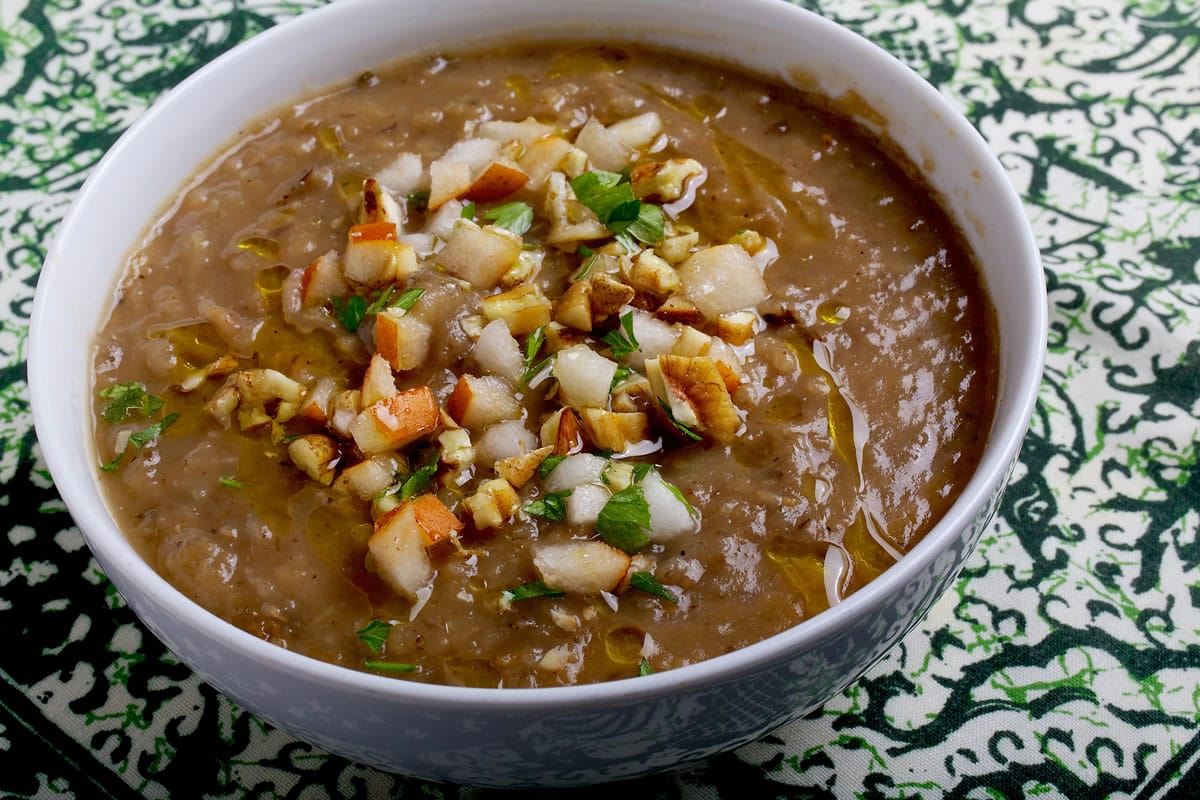Cookbook author James Peterson compares its flavor to those of turnips and radishes. In her “Vegetable Literacy,” Deborah Madison says it reminds her most of cauliflower. To Washington Post gardening columnist Barbara Damrosch, it can be as sweet as a parsnip if harvested in late fall.
They’re all talking about kohlrabi, but about the only things they agree on are that it tastes relatively mild and looks relatively strange. (In “Vegetables, Revised,” Peterson writes that the round orb with stems and leaves shooting straight up looks “like an organ on life support,” while Damrosch prefers a Sputnik analogy.)
Like many cooks, I’ve mostly eaten kohlrabi raw, used as crudite or grated into a salad. At this time of year my impulse turns to soup. D.C. area farmers market maven Robin Shuster has been telling me for years that when she cooks kohlrabi into a chunky soup, it carries the flavors of both cabbage and potatoes. When I’ve pureed it, I’ve found the texture a little watery, so I’ve started including an actual potato in the mix, too.
Most of the time when I see it in the markets, this brassica (related to, yes, cabbage and cauliflower but also to kale, broccoli and more) has been snipped of its stems and leaves, but if you find it with the greens attached, they’re worth cooking. Treat them like collards, and you’ll see what I mean.



